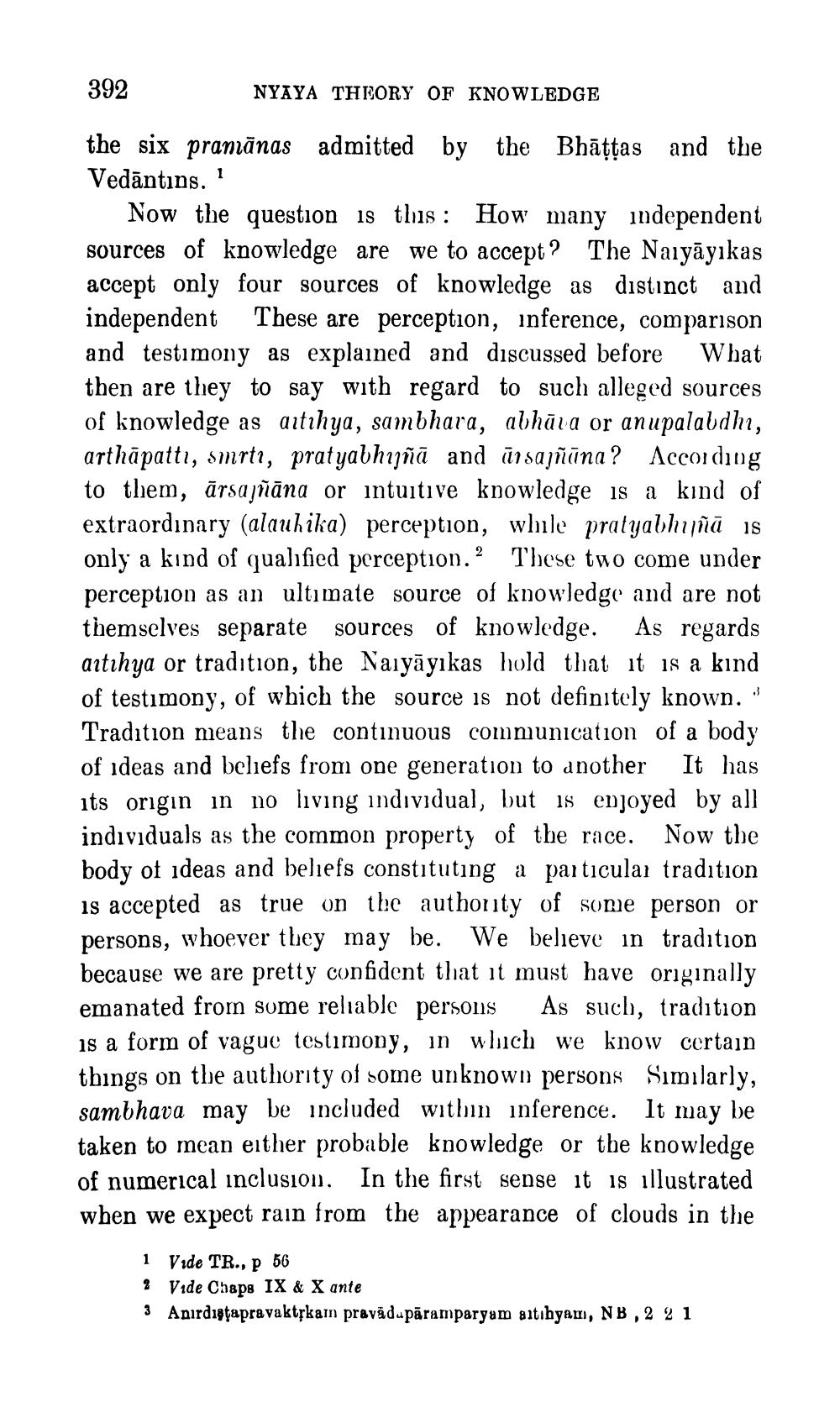________________
392
the six pramānas admitted by the Bhaṭṭas and the Vedāntins.
1
Now the question is this: How many independent sources of knowledge are we to accept? The Naiyayikas accept only four sources of knowledge as distinct and independent These are perception, inference, comparison and testimony as explained and discussed before What then are they to say with regard to such alleged sources of knowledge as antihya, sambhara, abhāva or anupalabdhi, arthāpatti, smrti, pratyabhijñā and ursajñāna? According to them, ārsajñāna or intuitive knowledge is a kind of extraordinary (alaukika) perception, while pratyabhijñā is only a kind of qualified perception. These two come under perception as an ultimate source of knowledge and are not themselves separate sources of knowledge. As regards artıhya or tradition, the Naiyayikas hold that it is a kind of testimony, of which the source is not definitely known. " Tradition means the continuous communication of a body of ideas and beliefs from one generation to another It has its origin in no living individual, but is enjoyed by all individuals as the common property of the race. Now the body of ideas and beliefs constituting a particular tradition is accepted as true on the authority of some person or persons, whoever they may be. We believe in tradition because we are pretty confident that it must have originally emanated from some reliable persons As such, tradition is a form of vague testimony, in which we know certain things on the authority of some unknown persons Similarly, sambhava may be included within inference. It may be taken to mean either probable knowledge or the knowledge of numerical inclusion. In the first sense it is illustrated when we expect rain from the appearance of clouds in the
NYAYA THEORY OF KNOWLEDGE
2
1 Vide TR., p 56
2 Vide Chaps IX & X ante
3 Anırdıştapravaktṛkam pravāda pāramparyam aitihyam, NB, 2 2 1




